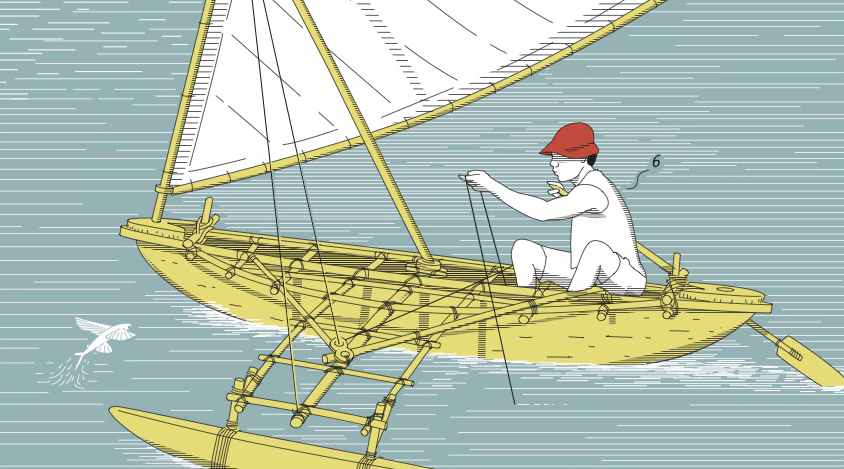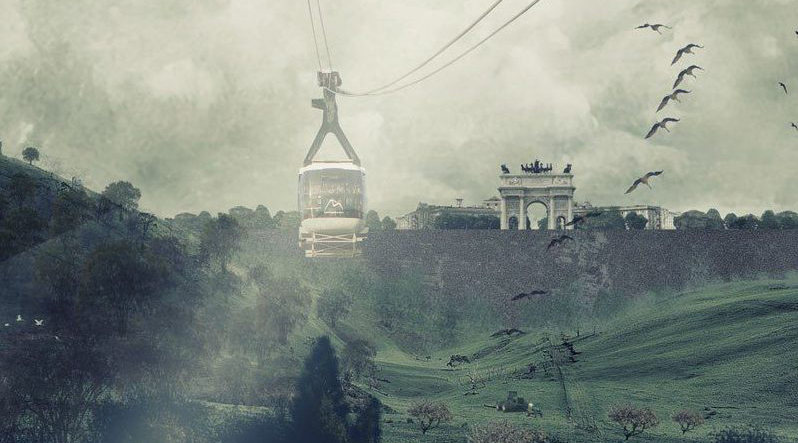
Soundscapes, the combined acoustic signals that reach our ears from whatever source, hold inexplicable powers over us. The consequences of those signals include the potential to elicit a sense of well-being or, conversely, inklings of dread. They can evoke a feeling of elation or sorrow. They can tempt and tease. Inform or mislead. Inspire or frustrate. Exposure to some types of sound can make us feel vigorous while others cause us to feel tired or ill. Learn to listen very carefully and patiently, though, and the benefits careful attention to this activity ensures begin to make sense. You might not be completely aware of this, but how every one of us manages and interprets those signals determines, at some level, how we arrive at significant decisions in our lives, and especially how we will continue to feel once those decisions are made.
Let’s take, for instance, the sound of an inferno.
In early October 2017, my wife, Kat, and I lost everything in the wildfires that destroyed large areas of Northern California. Our home. Our dear cats. All my detailed field journals going back half a century. Slides and photos of work in the field. Reference books. Nearly seventy years of correspondence. The wonderful sounding guitar I played at Carnegie Hall as a member of The Weavers. Fine art. Clothes. Furniture. The intensity of the inferno was so great that even the refrigerator and the engine block of Kat’s car melted into unrecognizable puddles of stainless steel and aluminum. Except for us, not one single item that we had amassed over the arc of our lives survived. With no warning from first responders, county, or law enforcement agencies, we were mercifully awake at 2:30 in the morning on the 9th when the hillside outside our front door burst into flame and we fled Wild Sanctuary, our home of twenty-five years, for the last time.

During our dicey pre-dawn flight, with only the clothes we wore, we came face-to-face with the malevolent eye of global warming and its horrific consequences as we bolted through the wall of fire that had enveloped our driveway—our sole one-lane path to whatever life now remains to us. As we raced toward the car, a fire tornado seethed with a voice of rage, a sound I’d never heard before and hope never to hear again; the combined roar of wind and blistering heat signified by a ferocious expirational crackling surge while the propane tanks of neighbors exploded all around us. The fire was a humbling reminder of feral power and the absolute certainty that natural forces will always triumph in the end.
A windstorm of historic magnitude—with gusts exceeding those in a Category One hurricane—began at sundown on Sunday, October 8th. As it intensified it blew many trees, insufficiently trimmed and already desiccated from the unprecedented California drought that had begun in 2011, into adjacent power lines. Ignited by contact with shorting live wires and arcing transformers, the branches flared up everywhere, all at once, and in so many areas of Napa and Sonoma counties that first responders were completely besieged. Where trees didn’t hit power lines, the velocity of the wind carried the blazing embers sometimes a mile or more to the south and west where they set alight other wooded areas and many structures. By week’s end, a third of our small village was transformed into ash. A combined 390 square miles of both counties were incinerated—an area nearly eight times the size of San Francisco. In a matter of a dozen days, the fires caused the deaths of 43 people and hospitalized over 185 others. It displaced about 100,000 people, and damaged or destroyed an estimated 14,700 homes, 3,600 vehicles, and hundreds of businesses.

Apart from our own lives, my natural sound archive—the core of a lifetime of devoted work—miraculously survived. The heart of the collection, an eloquent narrative of living organisms expressed through the numerous biophonies present in the recordings, is still there to be explored by students of environmental sciences and rendered into fine art creations in the fields of music, dance, theatre, museum exhibitry, and contemporary art installations. Fortunately, I had made five separate digital backups of this a rare compendium of field recordings, marine and terrestrial, a library begun in 1968. In addition to the original analog master tapes of music and soundscapes, three of the five copies of the archive were destroyed that morning. Of those that endured, one was stored offshore in Europe, where it had been hand-delivered to a safe house as a protective rejoinder to our current administration’s bewildering denial and unrivaled suppression of climate and ecological scientific research. The other copy had been deposited in a nearby bank.
Except for our cats, and as a practical matter, we do not consider the material impact of our loss to be terribly great. But it was emotionally traumatic—and it still is. Even though we know everything is gone, we’re still faced with a sense of cognitive dissonance when our minds default to questions like ‘Where are the familiar objects we turn to as reminders of who we are in order to help us recover, mementoes of family still here or gone, where we’ve been, of those whose paths we’ve crossed? And how can we ever again allow ourselves to feel as connected to another place when the habitat we had so lovingly tended and perfectly calibrated for our remaining years was taken that effortlessly?’
I write, now, from the first of several rented dwellings the insurance company provided to us post-fire for a short period. Reflecting for a moment, I think back on what I miss most about Wild Sanctuary, the name we gave to the undeveloped ten acres of hilly oak chaparral that, until the firestorm, had been our shrine-like haven for the past quarter century. It was, and remains today, a lovely isolated rural spot, not far from Jack London’s Wolf House and ranch, where in clear weather the illumination of our site came mostly from the sun, moon and stars with very little light pollution from the more densely populated areas to our south. On cloudless nights the spectacle of the Milky Way was almost always visible. Wild Sanctuary was a place where we were greeted nearly every day with the numinous voices that arose from various blends of 32 species of birds, a family of foxes, one of bobcats, several coyotes, reptiles, amphibians, lots of insects, and even a mountain lion that occasionally visited us, all making their sonic presence known from time to time. What made our home sacred was a serene consonance of the seasonal cycles, moments heightened by the captivating biophonies that arose from our tiny oak woodland.

Coming home from long field trips abroad, the site always welcomed us with a feeling that we had returned to hallowed territory. With all the “stuff” gone, now, the gentle tranquil soundscape remains the feature we miss the most. I suppose it’s a detail that we will be dealing with for the rest of our lives. After all, it was from the voice of our special animal orchestra that we knew the time of day or marked the progressive phases of the seasons. From messages inherent in those distinctive narratives we became intimately familiar with many aspects of the small bit of earth that we occupied and affectionately managed. Until the fire, the quality of the soundscape was always welcoming, healing, and reassuring—a subsequent effect of the collective sound produced within our modest but mostly healthy biome. In a word, even at the height of the seven-year historic Northern California drought that began in 2011, hearing the diminished ambient expression of Wild Sanctuary made us feel safe in the living world, a place where we have always strived to connect. In those lovely enchanted hours, we had become genuinely hopeful. Natural sound was always nearby to enrich our lives. Now, something is missing. Wild Sanctuary is eerily quiet. With the loss of that voice our sense of well-being has palpably suffered as we have moved tentatively and with little choice into an unfamiliar and uncertain diaspora.
© 2018 Wild Sanctuary. All rights reserved.
For more information about Bernie Krause’s work please watch his TED Global talk.



